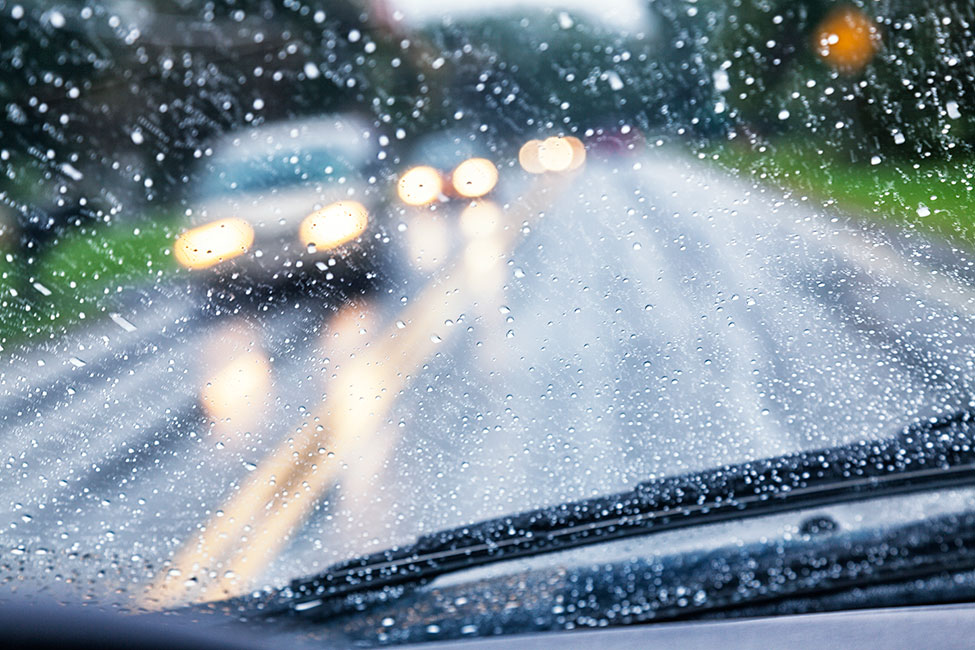Our tips for driving in the rain
Our tips for driving in the rain

©Willowpix/iStock
Statistics show that driving in wet weather doubles the risk of accidents. There are two reasons for this: poor tyre grip and lack of visibility. What precautions should you take in the rain? How can you adapt your driving style? What is and how to react to hydroplaning? Here's a checklist to help you drive safely.<br />
Check the weather forecast
Checking the weather forecast before taking to the road has two advantages. Firstly, it gives you a larger margin of room to manoeuvre so that you won’t become stressed by a possible delay and become tempted to drive too fast. Secondly, anticipating the arrival of the bad season gives you more time in the long term to equip your vehicle.
Tip: If you are already on the road when the weather looks like it might take a turn for the worse, listen to the national radio stations for weather warning broadcasts.
Check the equipment of your vehicle before you hit the road
For both cars and motorcycles, the first thing to check is the tyres. There are specially designed tyre models for driving on wet roads, which evacuate the maximum volume of water to reduce the risk of slippage. Your tyres must be in good condition: remember to check the tread wear indicator regularly.
Another essential piece of equipment is your car’s windscreen wipers. Stiff or worn-out rubber won’t do a proper and will dangerously limit your visibility.
Tip: remember to check the windscreen washer fluid level. Contrary to what you might think, rain – especially if it’s light – will not clean your windscreen!
Adapt the way you drive
There are specific constraints that affect your safety and must be taken into account when driving on wet roads:
- braking distances are increased;
- anticipation becomes more complicated;
- control of the vehicle is more difficult;
- the risk of aquaplaning increases.
Here are some tips to help you avoid the dangers of heavy rain:
- reduce your speed;
- increase the distance for safe stopping
- switch on your low-beam headlights;
- use your front fog lights as well in case of heavy rain;
- drive smoothly without jerking;
- prevent fog from developing in the passenger compartment by slightly opening the windows or switching on the defogging function.
Tip: reduce your speed in wet weather. If visibility is reduced due to heavy rain, always reduce your driving speed and ensure you remain under the limit. In the event of flooding or a red alert, stay off the road.
How to react in case of aquaplaning?
Aquaplaning is the loss of vehicle grip on the road. It occurs due to the formation of a layer of water between the road and the tyres, which are no longer capable of evacuating excess water. The more worn the tyres, the higher the possibility of aquaplaning, which may cause the vehicle to lose full control.
Resist the urge to step on the brakes in case of aquaplaning, as you will skid. Release the accelerator instead and use the engine brake to slow down gradually to prevent the risk of skidding. Continue steering the vehicle until you regain a good grip.
By following a few rules and applying common sense, it is possible to drive safely in the rain. However, it is best to avoid driving in case of severe weather, especially if you’re able to postpone your departure.
Feel like getting away from it all?
See our suggestions for novel trips and must-see places to visit near your home or holiday destination.